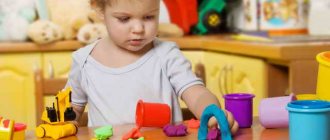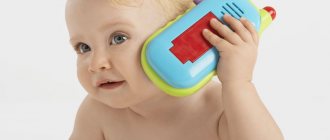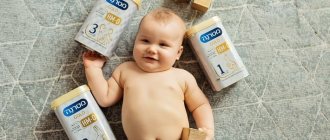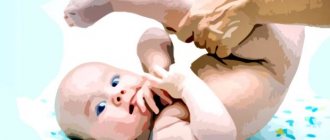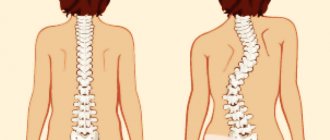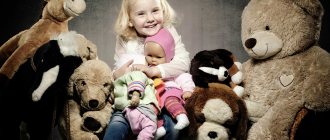Three-year-old children develop very actively: physically, emotionally, and psychologically. The development of gross motor skills is already more perfect: the child walks confidently, can change the tempo of his step, start running, and jump. At this time, you can teach your child to ride a bicycle. If we talk about the ability to study, then a 3-year-old child becomes more patient and diligent. You can organize classes with him for 15 minutes. After a dynamic pause (a break with another type of activity), the child can be asked to continue the lesson, also for 15 minutes. So. read: educational activities for children 3 years old.
What fairy tales does a 3 year old child need?
It is quite difficult to say unequivocally what exactly three-year-old children like, because each child is individual and has different intellectual needs: some perceive fairy tales easily, while others find them boring. The perception of fairy tales by children aged 3 years can depend on many factors, and yet the main thing is to instill a love and interest in reading by parents.
Other important factors:
- Frequent joint activities with parents
- Psychological readiness of a person to read books
- Playing with books from an early age (looking at pictures, letters, colors).
Why does a child need to read fairy tales?
- To raise a baby. If you focus on some instructive moments of the fairy tale, you can develop in a child the ability to react to many life situations, teach good and bad.
- To communicate with the child. Frequent conversations with a child on various topics will help parents form the right attitude towards many situations, the world, and other people.
- To strengthen the emotional background. This happens when parents read fairy tales to their children, correctly regulating their intonation. Thus, they help the child develop the skills of experience, empathy, and desire to help.
- To develop competent speech. So that in the future it will be much easier for the child to learn other sciences.
- To develop imagination. To expand your horizons and have creative skills.
Psychological point of view:
- Read a book to your child not in a boring way, but in a very emotional way, adding bursts of intonation and gestures. This way you can develop in your child a desire to empathize with the heroes of stories and fairy tales.
- By telling the adventures of the main characters, you can teach children values in life.
- It is best to choose poetic fairy tales for reading, which perfectly develop speech and expand the child’s vocabulary.
- You should not choose books for your child that are not appropriate for their age; they are too difficult “morally” and can give the child excessive stress and therefore become boring.
The best fairy tales for three-year-olds:
- Fairy tales “Once upon a time” (collection). The book contains only well-loved and well-known Russian fairy tales (for example: “Turnip” or “Kolobok”). The collection is full of nursery rhymes and funny rhymes, songs and riddles that not only entertain children, but also teach them.
- “Fairy tales for kids” (author V. Bianki). A collection of very easy-to-understand fairy tales that will definitely be interesting to children, teach them many life situations, and introduce them to animals.
- “Book of Fairy Tales” (author I. Suteev). A collection of the most interesting Russian fairy tales, complemented by colorful illustrations and beautiful design that captivates the child.
- “7 best fairy tales for kids” (author K. Chukovsky). A collection of the most famous works of this author, which are complemented by bright pictures that occupy the baby’s attention, captivate and take them into the world of fantasy.
- “A Kitten Named Woof” (author G. Oster). The book includes the most famous fairy tales and stories about the adventures of a kitten.
- “Alyonushka’s Tales” (author D. Mamin-Sibiryak). A collection of classic Russian fairy tales, complemented by artistic design.
- “Locomotive from Romashkovo” (author G. Tsyferov). This book can confidently be called a “classic” in the “children’s literature” category.
- "Fairy Tales" (by G.H. Anderson). The author's best fairy tales, abridged, supplemented with bright pictures.
What is the importance of reading books for a 3 year old child?
Speech development
Normally, a three-year-old child speaks about 1000 words well and can already speak well, so special attention should be paid to speech development. What can you do?
- Communicate with your child as much as possible, be interested in what he says.
- Perform articulation exercises daily. This will help you place the speech sounds correctly.
- Discuss the story pictures. A collection of fairy tales by Vladimir Suteev is ideal for classes.
- Learn poems and songs. Poetic riddles are a hit with kids.
Speech development is positively influenced by games and exercises that involve fine motor skills , for example:
- all kinds of games with cereals, beans, buttons, sand, shells, pasta, etc.;
- fastening buttons, lacing;
- finger gymnastics;
- origami;
- games with water.
Musical activities help develop speech hearing: singing, guessing familiar sounds, playing musical instruments, guessing songs, singing vowel sounds.
What developmental activities at home does a 3-year-old child need?
A child who has already crossed the threshold of 3 years of age needs regular classes with parents, educators and teachers. At this age, they experience a lot of transformations, both in their body and in their minds. They learn to think “like adults,” their speech develops, independence, confidence, and a desire to share their thoughts and fantasies appear. It is worth noting that if earlier classes with a child resembled more of a game, then at 3 years old they already resemble lessons.
The load and intensity of classes depends on the following factors:
- Does the baby go to kindergarten?
- Does the child know colors?
- Does the child know numbers?
- Does the child know shapes?
- Is the child’s leisure time organized?
- How much does the baby do with his parents at home (or with teachers in the kindergarten).
IMPORTANT: Classes are not only a way to teach your child something new, but also to have fun with him. In such additional lessons, there is only one rule - do not force the child to study, so that he does not have negative emotions about the lessons.
What should classes teach:
- Develop your baby comprehensively
- Strengthen the baby’s knowledge (already acquired earlier)
- Teach your child to know exactly his name and name
- Help formulate sentences correctly
- Learn to think logically
- Help find necessary items (distinguish them by their characteristics).
- Develop drawing, sculpting, and appliqué skills
What functions should be developed:
- Logics
- Attention
- Memory
- Creative skills
- Math abilities
- Speech
- Increase vocabulary
- Speaking
- Fine and gross motor skills
- Knowledge of the world
Three year old crisis
Children over 3 years old are characterized by changes in behavior that can cause panic and misunderstanding in most parents. However, everything is not so scary. For children of this age, changes in behavior and character are absolutely normal.
Of all the crises that occur in the process of growing up, the crisis at three years of age is the most difficult. It begins gradually from the age of two, and after, reaching its peak, it turns into conflicts and hysterics on his part.
The only thing that is reassuring is that after its peak, the crisis passes quickly, and your son or daughter begins to understand a lot.
Signs of a three-year-old crisis:
- “No” - this is the word the baby repeats most often in response to any proposal;
- The child is stubborn and insists on his own opinion;
- The baby refuses to perform actions that he had calmly done before, for example, putting away his toys;
- Refusal to help. Even if he fails at something, he will insist on doing it on his own;
- The child resists everything that his parents or other adults offer him. He can also show his dissatisfaction in a fight;
- A baby who was previously quiet and calm may begin to scream, fight, and break things and toys. Moreover, he does this demonstratively;
- He starts to get jealous of everyone's mom. This is especially true for father, brothers or sisters.
This behavior is due to the fact that with age the child begins to understand that he can influence everything that happens around him, as well as people. In addition, he likes to decide for himself what to do and how to do it, where to go, etc. He feels big and with this behavior he tries to demand respect for himself. Rebellion, hysterics, screaming and stubbornness are difficult to bear not only by parents, but also by the baby, since he does not understand what is happening to him and cannot independently cope with the emotions that have washed over him.
At this age, the baby most often resorts to hysterics to achieve his own goals. That is why he begins to roll them up exclusively in public places or in front of those who are most susceptible to his manipulation.
It will be much easier for parents to survive this stage of life if they listen to the following advice:
- Change your approach. Accept that he has already grown up and do not stop him from doing what he can do without your help.
- Give your child the opportunity to make his own choice, or at least the illusion of this choice. For example, ask him which of two sweaters he will wear to kindergarten today.
- Ask him for help and don't force him to do anything. If he doesn't want to put the toys away, don't insist, but ask you to help. It can be in the form of a game “Who is faster?”
- Give yourself plenty of time so that your child has time to do everything on his own.
- If he starts throwing a tantrum, then ignore it, remain calm and firmly say “no”. Otherwise, this behavior will be repeated quite often.
- If a hysterical child decides to fall into a puddle or right on the roadway, then take him to a place that is safe for his health and life, and leave him screaming there.
- Don't yell at your baby or scold him for tantrums. Instead, try to help him and explain how to express his feelings and emotions in words.
What educational games does a 3 year old child need?
Additional activities help a 3-year-old child speak correctly, so it is important to clearly pronounce everything, even the most difficult letters. Teach your child to ask and answer questions. During any exercises, use visual aids – colorful pictures with thematic drawings. Try to develop memory and speech: imitate dialogue on the phone, discuss the meaning of fairy tales you read, memorize lines of poems.
Examples of activities:
- Drawings by cells. They teach not only to count, but also to recognize colors, create pictures, develop imagination and creative thinking.
- Game "beads". Use both real and toy or painted beads to count beads and move them.
- Game "Remember the pair". In it, the child needs to find a match for the proposed picture. This way the baby will develop logic.
- Collecting puzzles. This is a creative, interesting and logical activity.
- Assembling the designer. Helps you think logically and creatively, create structures and figures.
- Game "Find the extra object." You can use pictures or toys, the task is to remove what does not fit into a logical series.
- Game "shadow". The baby will need to find the necessary items that match the contours.
- Any creative activities such as modeling, drawing, appliqué, crafts made from natural materials.
- Educational walks into the streets with excursions and environmental studies.
Lessons for a 3 year old child
How to exercise at home?
The developmental lesson should take place in suitable conditions: in good lighting, in a ventilated room. The TV and computer need to be turned off, toys should be put away so that nothing distracts the baby. Make sure your child has had a good night's sleep, is not tired, and is not hungry or thirsty. Try to have your classes regularly, at the same time, because three-year-olds are very sensitive to changes in routine.
If a child refuses to complete the proposed tasks, do not force him, occupy him with something else. After some time, try again, most likely it will be successful.
What kind of gymnastics does a 3 year old child need?
Physical education of a child is very important for his proper maturation, health and activity. You can do gymnastics with your baby at home (provided that the room is well ventilated), in the gym or in the fresh air.
What may be included in the system of gymnastic exercises:
- Warm up. This is a series of simple exercises that the baby must repeat after the adult: shaking the head, raising the arms and legs, circular movements of the body, squats, the “mill” exercise, “scissors” or body turns.
- Run. In this case we are talking about simple running, play running (catching up, tag, patching) and running with a ball. It is best to conduct this activity in a gym or on a playing field (outdoors).
- Jumping. In height and length, in play or normal form, on one or both legs, jumping with clapping.
- Fitball exercises. They should be performed at home or in the gym with your mother (or any adult). There are many types of exercises: rocking, sitting jumping, bending, kicking a ball, pushing.
- Active games with the ball. Any outdoor games: football, basketball and others.
- Swimming. Must be carried out on reservoirs or in a swimming pool.
- Dancing. Professional dancing with a teacher at school or free dancing with parents at home.
- Imitation of animals. Animal figures, sounds and movements should be repeated.
- Obstacles. You can find conditions for performing such tasks on outdoor playgrounds, in a specialized sports hall, or you can do them yourself (climb onto the sofa, jump over a small pillow, roll a fitball, and so on).
Artistic gymnastics for children 3 years old
Interesting educational games for 3-year-old children with their mother
The following are examples of educational games for 3-year-old children that you can play with your mother.
Speech development game
They can be aimed at developing vocabulary, speech volume, and proper breathing when pronouncing words in Russian speech.
Note! Using alphabet cards will give kids the opportunity to learn what individual letters sound like.
Here is an example of one of the games that allows you to teach kids to name various objects:
- To do this, you need cards that contain images of various objects and situations.
- Mom points to one of them and asks to name the depicted object, offers to pose a question to it and answer it, asks simple questions related to the cards.
Drawing with plasticine
The lesson for children 3 and 4 years old is as follows. For it you need to prepare brightly colored plasticine made from a material that does not stick to your hands. You can use a sheet of cardboard or plexiglass as a basis for the drawing.
Games with mom
The child is taught to pinch off pieces and spread them on cardboard, making a drawing.
Sand therapy
To do this, the child is given the opportunity to play in the sandbox, providing him with various toys. A child at the age of three is able to independently come up with the logic of his plot. By observing what he does, you can see what is bothering him and help him cope with his internal problems.
Important! The therapeutic effect is that the child expresses himself freely while playing in the sandbox and gradually calms down. By observing him, the mother can better understand what is bothering him and help him.
For a child, three years of age is an important stage in his development. The help of adults in mastering the world around him is very important to him. This requires children's games for children from 3 to 5 years old, developing their physical and mental abilities.
What dances are suitable for a 3 year old child?
At 3 years old, the child is already fully aware of what dance is and diligently tries to imitate the movements that they saw from their parents, on TV or from their peers. At this age, kids are very active and easily influenced by their teachers (both professional and parents). You can enroll your child in a special dance club or learn basic movements with him at home:
- Waving your arms
- Head turns
- Leg Swings
- Placing hands on belt
- Circular movements of the pelvis
- Movements of the feet and palms
Features of development of a 3 year old child
Fine motor skills also improve. The child can fasten buttons and clasps, draw with pencils, sculpt, and fasten construction kit parts.
By the age of three, a child already knows and speaks more than 1000 words. Although speech is not yet clear. But this does not stop you from asking your child numerous questions. The age of "Why". But the main activity of a three-year-old child remains play. Most of all, the child prefers to play role-playing games, developing his thinking and imagination.
What toys do a 3 year old boy and girl need?
The best toys:
- Logic pyramid. Such a pyramid differs from a children's pyramid in that it does not have the usual slot for figures, but with an exact repetition of the contour (which sometimes has protruding edges). In such a pyramid, it is important to select and string the rings correctly, otherwise it will be impossible to assemble the pyramid.
- Sorter. Different types of sorters (wooden, plastic or fabric bags). The task of the sorter is to teach the baby to distinguish shapes and figures by threading the necessary one into the appropriate cell. Most sorters also have additional logic exercises: abacus, telephone, numbers, beads, labyrinths.
- Puzzles. Large puzzles and medium-sized puzzles (soft, cardboard, plastic, magnetic). Images and pictures on puzzles should be very bright and colorful, interesting to the child (for example, pictures from cartoons or favorite characters).
- Constructor (regular). Large and small. It will help your child create different designs, shapes and houses. A colorful constructor will help you learn different colors.
- Magnetic constructor. A modern designer that allows you to create flat and three-dimensional shapes of different colors.
- Snake. A classic logic toy that introduces children to shapes and figures, allowing them to experiment and practice.
- Machine. This is a good toy for both boys and girls. The child gets acquainted with its figures, the way it moves, and compares it with real cars.
- Doll. Introduces the child to how the human body is built, allows him to understand how a person moves. Also, in some cases, the doll develops the baby’s creative abilities when he dresses it and combs it.
- Little engine. A good toy for boys and girls that introduces him to the world around him.
- Children's domino. Instead of dots and numbers, dominoes have pictures that the child must find and match. Thus, the child counts, searches, thinks, thinks logically.
- Set for creativity. Consists of cord and large beads with large holes. Such beads should be strung on a cord, while simultaneously developing hand motor skills by counting beads and comparing their colors.
- Dollhouse. An educational toy that allows a child to be aware of the world around him, teach him to serve himself and take care of others.
- Mosaic. A wonderful toy that teaches colors and numbers. By composing images, the baby develops creative skills.
- Crockery. A simple toy for boys and girls that teaches kids self-care.
- Telephone. Such a toy with a lot of buttons, a disk set, and a tube entertains the child and develops his hand motor skills. If the phone is “talking” and “musical”, this also introduces him to melodies and new words.
- Interactive toy. It could be a doll, a soft animal or a machine that can talk, answer questions, sing songs and read poetry.
- Matryoshka. It will teach the child to distinguish between “big” and “small”.
- Books. Colorful books with pictures and rhymes will develop the child.
- Logical labyrinths. They will allow the child to develop logic in order to deliver the bead to the end of the maze or correctly solve the puzzle.
The best toys for a 3-year-old baby
Classes to develop attention
How to engage a three-year-old child and at the same time develop his thinking, logical abilities, creativity and memory? There are a lot of educational games and toys for such an event. This could be a coloring book, a construction set, or a collection of pictures. A child at three years old should already be able to not only identify and designate colors, but also recognize objects by their geometric differences.
As for toys, today's market provides a huge selection of similar products in the form of cars, soft toys, dolls, dishes, and various musical houses. Also an excellent option are toys that can be disassembled into several components. Don't ignore paints, pencils, and plasticine.
What rhymes does a 3 year old child need?
At 3 years old, not all children are able to memorize rhymes, but they can respond well to funny lines, funny nursery rhymes and play songs. They should be included in any household processes: washing, dressing, eating, picking up toys, dancing, exercising, going to bed.
IMPORTANT: Try to choose the shortest nursery rhymes with words that are simple and understandable to the child, and soft rhyme.
Examples:
Nursery rhymes No. 1
Nursery rhymes No. 2
Nursery rhymes No. 3
Nursery rhymes No. 4
What crafts does a 3 year old child need?
What you can do with your child:
- Drawing with pencils in cells. To do this, you can have special creativity kits or ordinary colored pencils and a checkered piece of paper (notebook).
- Drawing with fingers and palms. Finger paints (they are not even scary to eat, because they are completely safe for children) are very popular with kids. They are very bright, they have a thick liquid consistency and they leave rich imprints on paper. These paints are incredibly fun to paint on any surface.
- Application. For such creativity, you can use colored paper, colored cardboard, pieces of fabric or felt. They must be attached to the paper using dry glue or pieces of tape. Parents should cut out all the figures for applique in advance.
- Modeling. You can create figures from ordinary plasticine, plasticine dough, or homemade salt dough. From such materials you can create people, animals, geometric shapes, letters and numbers together.
- Crafts made from natural materials. The beginning of work should take place in nature while collecting working material: chestnuts, acorns, leaves, twigs, pebbles, shells and others. At home, you will decide exactly what you want to create: a figurine of a bird, an animal, a photo frame or a painting, and then get to work.
- Making beads. To do this, you can use sets that are sold in toy departments (large beads with large holes and rubberized hard lace) or use buttons and rowan berries.
- Making bouquets. This can be done while walking in the fresh air at any time of the year: in summer and spring from flowers, in autumn and winter from twigs, fallen leaves, fir trees, rowan berries.
- Collecting puzzles. In modern children's stores there is a large selection of multi-element puzzles, when assembled you will get beautiful pictures. Secure the puzzles with tape on the back side or place them on paper with glue, and then hang the finished product on the wall.
- Mosaic drawing. While playing with mosaics, you can take photographs of the resulting patterns and drawings, and then store the pictures or hang them in frames on the wall.
Creative activities with a child
A moment of creativity
There are many ways to entertain your baby at home. The following options will appeal to creative children. They require perseverance and help from parents. You can offer your little one the following activities:
- Make something from scrap materials.
Every housewife will find some cereals, coffee beans and other things at home. All this will come in handy. You also need PVA glue and imagination.
You can make a vase from the prepared materials. For this you need a glass bottle with a wide neck or a glass. The container is greased with glue from the outside, then cereals, grains and everything that has been prepared are carefully poured onto its surface. You can make patterns on the vase.
- Many children love cutting paper. So why not turn it into a fun activity. The baby can be given the opportunity to cut out everything he likes from the provided magazines and pictures and paste it on his poster.
It is worth paying attention to the choice of scissors. They should have rounded ends so that the baby does not get hurt.
- In addition to cutting out ready-made pictures, you can give your baby the opportunity to make an applique on their own from colored cardboard and paper. Of course, he can’t cope without the help of his parents, but what an interesting activity this is that can unite the whole family.
Which plasticine modeling is suitable for a 3 year old child?
Using plasticine, salt or plasticine dough, you can sculpt:
- Balls or balls
- Tubes or rollers
- Flat figures
- Patterned shapes (for this you need to use molds).
- Plasticine paintings
- Pictures made from salt dough (they can then be painted with paints).
IMPORTANT: First, make the figures with your child, and then put them together into one picture or craft.
What outdoor games does a 3 year old child need? How to play with a 3 year old child?
Games for baby:
- Football. Of course, children's games are significantly different from real ones and adults. Children's football consists of a goal and a ball, as well as an adult who prevents the child from scoring a goal.
- Basketball. To play, you can use a children's basketball hoop or bucket. The kid’s task is to hit the target from a short distance and throw the ball.
- Volleyball. The game is based on teaching your child to hit the ball several times. You can use a regular ball, but it is much better to play with lightweight inflatable balls or balloons.
- Throwing the ring. You need to take any ring (professional or from a sieve), and throw it on a straight stick.
- Hide and seek. Teach your child to count and hide so that an adult can find him later.
- Catching up. Can be done among children or with adults, running on level ground.
- Jumping rope or rubber band. Simple jumps over a low string.
- Overcoming obstacles. Obstacles should be made by yourself or found on the playground.
Active games for a 3-year-old child
Crisis of three years
The three-year crisis is considered the most turbulent in a child’s development, and it is a serious obstacle to regular developmental activities. Negativism, hysterics, stubbornness, ignoring requests, jealousy - you can encounter all this at any time. What to do in this case?
- Change your tactics and ignore the hysteria.
- Give your child more time to recover.
- Provide choice, or the illusion of it.
- Instead of forcing your child, offer help.
- Don't criticize or scold.
If you feel that you cannot cope with yourself and your child, seek the help of child psychologists and early development teachers. Most likely, in an unfamiliar environment the child will begin to behave more calmly. Classes in early development centers are held in small groups of up to 6 people, where children feel comfortable and receive a lot of attention.
What cartoons are suitable for children 3 years old and how long can they watch TV?
At 3 years old, a child already fully understands the content of children's cartoons, and therefore simple educational cartoons may turn out to be boring and uninteresting for him.
What you can include for your child:
- "Merry Carousel"
- "Smeshariki"
- "Kids"
- "Masha and the Bear"
- "Barboskins"
- "Luntik"
- "Smarta and the miracle bag"
- "Peppa Pig"
- "Leva's Truck"
- "Excavator Masya"
IMPORTANT: You can find any cartoon on the Internet by typing its name in the search bar. You can also search for special cartoons, indicating its features: “learning colors” or “learning to count.” Try not to accustom your child to watching cartoons around the clock, but devote no more than half an hour to this, 2 times a day.
Development of memory and attention with a 3-year-old child: exercises
Best exercises:
- Images. To do this, you can use purchased or made cards with pictures. The baby’s task is to carefully examine the drawings and name what he sees, what color and shape it is. Books can also be used for these purposes. You will find pictures of animals, fruits, vegetables, insects, numbers, geometric shapes, photographs of girls and boys useful.
- Game "It Was and It Became". Great game for memory training. You need to lay out several items in front of the baby, then quietly remove one and ask what exactly is missing. Gradually and slowly place objects in front of your baby so that he remembers them well. As the baby grows, you can increase the number of items.
- Game "Guess by ear". To do this, you can use any toys that make noise (drum, rattle, whistle, pipe, bell). The task for the child is to provoke a sound so that he does not see the instrument, but accurately guesses it.
- Game "Guess what it looks like." To do this, you should cut out several pictures of toys or objects that are well known to the child (car, bunny, cat, star, doll). The adult’s task is to trace the outline and show it to the child so that he can guess.
Developmental activities for 3-year-old children
Social development
The development of social skills is especially important if the child does not go to kindergarten for some reason. To do this, encourage play and communication with other kids on the playground in the yard. In addition, teach your baby to be independent:
- give feasible tasks, for example, making the bed, putting away a toy, washing a plate after yourself;
- ask for help when you cook or clean;
- teach how to dress and undress, fasten shoes, neatly fold things;
- introduce the rules of behavior at the table, on the street, in a public place, at a party, etc.
- teach polite words: thank you, please, etc.
Speech development in a child at 3 years old: exercises
Best activities:
- Repeaters. A very simple activity that involves the child repeating the words of an adult (from simple to complex).
- Animal sounds. Imitating the sounds of domestic and wild animals. In some cases, you can repeat the sounds of cars, helicopters and airplanes (buzzing, ringing and growling letters).
- Name the item. To do this, you can use toys or cards with bright pictures; all words should be familiar to the child.
- Game "My name is". The game is based on memorizing a personal first and last name, the names of relatives and friends.
How to develop a child's speech:
- Start pronouncing simple words and end with complex (or new) ones.
- Teach the child to describe the situation and find solutions (For example: The baby elephant has a tummy ache. You need to call the doctor. The doctor gives medicine. The baby elephant is fine, it’s no longer sick).
- Teach your child to sort words into groups. For example, clothes (dress, pants, T-shirt, T-shirt), dishes (plate, cup, fork), toys (doll, bear, car).
- Teach to connect an object and an action : the cat eats, the boy drinks, the flower smells.
- Learn to use intonation : speak loudly, quietly, “explode” your voice, whisper.
Card index of educational games and exercises for children of the third year of life
Card index
educational games and exercises for children of the third year of life
Activities with a child of the third year of life have their own specifics: providing the child with greater independence; respectful attitude towards the child, recognition of his right to his own choice; tactful assistance and control over the child’s actions. Accustoming to order, discipline, cleanliness, high-quality performance of any activity.
— Exercises with matryoshka dolls
For many children of the third year of life, exercises with a matryoshka are considered difficult to complete (their activity is chaotic: they grab one or another part, throw it, try to force a large matryoshka into a smaller one, etc.) In this case, you should return to this exercise for children of the previous age period. Be patient and proceed gradually, starting with a matryoshka doll with one liner. (Instead of nesting dolls, you can practice with any objects of different sizes that can be placed one inside the other: pots with lids, jars, boxes, etc.) It is very important for the child to master actions with objects of different sizes; from a psychological point of view, this indicates a good development of perception, enrichment of sensory experience, visual-motor coordination, increased muscle sensitivity of fine motor skills, etc.
— Exercises with boards
The already familiar game material in the form of boards with slots is becoming more and more complex. For a child of the third year of life, a board is used with two specified sensory properties - size and shape - out of four possible (large and small circles, large and small squares). First, have your child cover one board correctly with the cut out figures. If the child easily copes with this task, invite him to do the exercise with two boards (in this case, the two boards are simply attached to each other). If this task is successfully completed, offer your child other types of boards.
— Color discrimination exercise (if your child is color blind)
Introduce the names of colors into your child’s conversation and play, but not as pressure: “Tell me, what color is this?” It’s better to suggest: “I’m building a red tower. Find me another red cube. Like this,” and show the red cube. Or: “I think it’s a green cube.” When will a child respond with interest to a question like “Where?
red cubes? or “What color is your blouse?”, this will mean that in his mind the word denoting color has been connected with the visual image.
Use any everyday situation to once again reinforce your child’s understanding of the color characteristics of objects. Ask your child what color apple to give him - green or red, what color bow should we tie today? etc.
— Color discrimination exercise
If the child has mastered the primary colors (red, blue, green, yellow), offer him an exercise with objects of eight colors (red, orange, yellow, green, blue, purple, black, white). If your child has difficulty distinguishing colors, introduce new colors gradually. For example, you scatter cubes of different colors on the table and ask the child to sort these cubes by color: put all the red ones in one box, all the blue ones in another, etc. You should not require the child to remember the names of the colors, the main thing is that he arranged the cubes correctly by color.
Prompt your child if he makes a mistake: “No, this is not a red cube, but an orange one, let’s put it in another box.” To make it easier for your child to navigate colors at first, place one cube in each box and say: “Put the same cubes as this one in this box.”
— Exercise to distinguish colors (drawing with pencils and paints of different colors)
Offer your child paper and multi-colored pencils: “Let's draw a tree and color in the leaves with a green pencil, paint the sun with an orange pencil, the sky with blue, the car with red,” etc. The same thing with paints (gouache is used). Encourage your child to choose their own colors to paint familiar objects. First, teach your child how to hold a pencil and brush correctly. Take your child's hand with a pencil or dry brush and make several strokes of coloring with the pencil or brush. Then dip your brush into the paint and paint something together. If your child is having difficulty, start with easier tasks. For example, paint over only the leaves on a tree, or draw only the sun. Allow the child to independently choose the subject of drawing according to a preliminary plan.
- Exercises with beads
- Choose colorful beads and cords. Secure one end of the cord with a knot so that the beads do not fall off. Teach your child to string beads on a cord.
Offer to make beads of the same color for the corresponding dress, blouse, bow, etc. Ask the child: “What color is this dress, what beads will go with this dress?”
— Stringing beads of different sizes
A set of 10 beads is used: 5 pieces with a diameter of 2 cm and 5 pieces with a diameter of 1 cm, cords or fishing line. Invite your child to string the beads one by one: large, small, etc. Help your child string the beads, secure them, and alternate them correctly. Repeat verbally the order of alternation: “First big, then small, again big and small.” Fix the child's attention on the fact that the beads alternate: ball, cube, ball, cube, k
— Stringing beads of different colors
First, offer your child beads of the same shape, size and two colors. Invite your child to string the beads one by one (red, green, red, green, etc.). Next, offer beads in other color combinations.
— Stringing beads of different shapes
Beads of different shapes (round, cubic, oval, etc.), but identical in size and color, are strung on a fishing line in different sequences, alternating in shape. In addition to the main focus of exercises with beads (the ability to distinguish colors, shape, size of objects, alternate them by quality), these exercises perfectly develop fine motor skills of the fingers (precision and coordination of movements), eye, perseverance, diligence, aesthetic perception and more.
— Exercise to develop correct pronunciation of sounds. The Make-Believe Error Method
If, for example, a child says “t” instead of “k,” select several pictures or objects that begin with “k.” Take a doll or show it in a picture. With a smile, ask the child: “Is this a book?” and shake your head so that the child understands the game (the substitute sound should not be the one the child uses). Then reproduce the child’s mistake: “Is this tutla?” Finally ask: “Is this a doll?” At the same time, a nod and a smile will tell the baby that this sound is correct. As soon as the child grasps the idea of the game, do not prompt him and watch how he independently determines the correct sound. For example, ask: “Is this a car? No? So it's a cup? Also no? Maybe porridge?'" Wait for the answer "yes" and confirm: "Yes, it's porridge."
Use short poems with specially selected rhymes to develop your child’s sound pronunciation and speech in general.
— Ball games to develop motor skills (dexterity, coordination, speed), eye, emotional sphere (ability to lose, obey the rules)
Invite your child to play with the ball.
- Throw the ball up and catch it with both hands.
- Hit the ball on the floor so that it bounces higher.
- Kick the ball and see who will roll the farthest.
- Throw the ball to each other and catch it.
- Hit the ball into the box, gradually increasing the distance (with both hands, right hand, then left).
- Gently roll the ball forward, and the child should overtake it.
- Roll the ball so that it hits between the legs of the chair (with two hands, right hand, left hand, legs - one, then the other).
— Exercise “Jump from a height”
Place your child on a low bench and teach him to jump onto the floor. At first, support him by saying: “Bend your legs, push off, straightening your legs, and jump down.” Praise the child: “Well done, how clever you are!”
Read the poem: “The mistress abandoned the bunny, The bunny was left in the rain.
I couldn’t get off the bench, every bit of promo.”
— Jumping exercise
Stretch a string with candies, toys or other objects strung on it so that the child can reach them by jumping on two legs and grabbing the object with his hand.
— Rope exercise
Lay out the rope on the floor. Ask your child to walk exactly along this rope. First, the child walks along a straight rope, then along a winding one.
— Game “Guess Who’s Coming”
After visiting the zoo, circus, or looking at books with pictures of animals, play a game with your child in which you need to depict the habits of animals.
For example, like this: “Here comes a bear, he walks slowly, heavily, that’s how a tambourine sounds.” Knock the tambourine slowly, and the child imitates how a bear walks.
“And this is how the sparrow jumps, quickly, quickly, just as a tambourine is about to sound.”
Quickly knock on the tambourine, and the child jumps like a sparrow.
— Game “Guess the Voice”
Collect animal toys whose voices you can imitate. Offer your child the game “Guess who came to visit you.”
Hiding, you give a voice; “Aw-aw-aw! Guess, Mashenka, who came to you?” If the child does not name, say yourself: “This dog came to Mashenka,” show and give the dog to the child. Continue the game, change roles with the child.
Exercises for attention and memory
“What’s missing from the table?” Place 5-6 toys on the table, ask the child to look carefully at these toys. Next, you remove one toy (at this time the child turns away) and say: “Guess, Vanya, what’s missing on the table, what toy?” If the child copes with this task, increase the number of toys. Then switch roles - now the child hides the toy, and you guess. Play the same game with the addition of toys: “Look, Vanechka, carefully, what appeared on the table, what toy?”
Just like in the previous game, place 5-6 toys on the table. The child carefully looks at what toys are on the table and how they are located. Then, when the child turns away, change something, for example, the bunny is now sitting in the car. The child guesses what has changed, what is different from what it was. As your child understands the meaning of this game, complicate the task.
- You give the child the following task: “Look at me carefully, remember everything in my clothes, then I will leave the room, and when I enter, you must guess what has changed.” Leave the room and, for example, put on a hat and enter the room. The child looks at you and sees that a hat has appeared that was not there before. You praise the child and the game continues. Gradually complicate the task, change roles.
— Game “Hide the Balls”
Place three containers of different sizes (with lids) on the table and place three balls of also different sizes. Ask your child to hide a large ball in a large jar, a medium ball in a medium one, and a small ball in a small one. Then you need to close each jar with a lid of the appropriate size. After this, remove the balls from the jars and put the jars inside each other (hide all the jars in one large one).
— Exercises with cut pictures
Take a picture with an object well known to the child drawn on it.
Cut this picture into two parts and ask the child to connect these parts together and guess what kind of object it is. If the child does not succeed in this task, prepare two identical object pictures, one of which is cut into two parts. Give the child a cut picture, show him the whole one and say: “Look at this picture, there is a ball drawn on it; put the two parts together so that you get the same picture, with a ball.” Next, offer the child pictures cut into 3 or 4 parts.
- Exercises for fine motor skills and creativity
- "Drawing". Draw with your child as often as possible. Teach him to draw a house, a man, a car, a train, etc. “Drawing balls” Read the child a poem by V. Antonova: “Balls, balls They gave us! Red and blue Dachas for kids! We raised the balls above our heads. The balls danced - Red, blue!
Give your child a piece of paper and colored pencils. Ask him to draw these balls and paint them in different colors. Remind your child: “The balls fly high up, in different directions.”
Draw with paints On a sheet of paper, draw Christmas trees and grass. Give your child this drawing, let him paint strokes (traces) of fairy-tale characters, for example, from the fairy tale “The Little Goats and the Wolf.” Tell your child this fairy tale. Show how you can depict the tracks of a wolf: “This is how a wolf walks through the forest. He's angry and hungry." “What song did the goat sing to her kids? - ask the child. — When the goat saved all the kids, they were happy and began to jump merrily. Show how the kids jumped.” Help your child draw these marks.
— “Modeling”
Tear off a small piece of plasticine and show your child how to make a ball, stick, circle, etc. out of it. Try to instill in your child an interest in modeling: this is very important for his development.
Invite your child to make fungi out of plasticine: “We’ll go into the woods and find a fungus. But there are no mushrooms. They need to be molded from plasticine.” Help the child.
“Now let’s make a lot of pies and buns for the cat,” you say,
reading a nursery rhyme: “The cat went to Torzhok, the cat bought a pie, the cat went to
street, The cat bought a bun. Should I eat it myself, or should Anechka take it? And I’ll bite myself,
And I’ll take it to Anechka too.”
“The cat ate it and is thinking,” you say, “what am I going to treat the kids with?” Let's help him and bake a lot of pies and buns."
- "Cutting out".
Buy your child small scissors with rounded ends. Show how to use scissors. Grasp your child's hand and help him cut something out. For starters, it could be just strips of paper.
- Game "Guess the word"
When you ask your child riddles, he must guess and name the missing word.
*Don’t be afraid—it’s a goose, I’m afraid of it myself... (I’m afraid)
*I sewed a shirt for Mishka, I’ll sew him... (pants)
*Who alone has a horn? This is fat... (rhino)
*My sock disappeared, it was dragged away... (puppy)
*Oranges and bananas are very fond of... (monkeys)
*Instead of a nose - a snout, Instead of a tail - a hook.
*My voice is shrill and ringing, I am cheerful... (pig) *Chick-chirp! Don't be timid! I'm experienced... (sparrow) * - Yoke-go! - the child shouts, So this is... (foal) * He purrs and sings, Guessed it? This is... (cat) *He slept in a den during the winter, sucked his brown paw, and woke up and began to roar. And his name is... (bear) *I get up at dawn and wake up everyone in the yard. I have a comb, Who?.. (cockerel)
*He’s like a huge mountain - Very kind, kind... (elephant)
*Did you feed the birds in winter - Pigeons, crows, tits? Don’t waste a minute: Under the bridge they winter... (ducks)
*He loves to bask in the sun, dress in stripes, and he tastes like sugar, and his name is... (watermelon)
Where can you go with a 3 year old child?
In big cities there is a large selection of entertainment and educational institutions:
- Public or private kindergarten
- Children's creative development groups (each has its own methodology).
- Dance club
- Drawing circle
- Creative courses
- Entertainment center (slides, trampolines, obstacles)
- Amusement park
- Pool
- Gaming electronic machines
- Zoo
- Circus
- Oceanarium
- Puppet show
- Children's entertainment room
Principles of conducting classes with children 3 years old
Activities with a three-year-old depend on several factors:
- does the child attend kindergarten?
- what the child knows and can do, does it meet the minimum age requirements;
- how leisure time is organized;
- how much time does the baby spend with his parents?
Activities with children are also one of the best ways for mom and dad to communicate with their child. Therefore, conducting bright and interesting home activities is useful and important. The principles of parents are sometimes radically different. Some people believe that you can’t force a child to do anything, and even if he doesn’t know what the preschool program requires, it’s not scary. Others, on the contrary, try to make an intellectual and a child prodigy out of the child and overload the child with work.
We will describe the key principles of conducting classes later, but now we will clarify what they can be and what functions and skills need to be developed in a three-year-old child.

